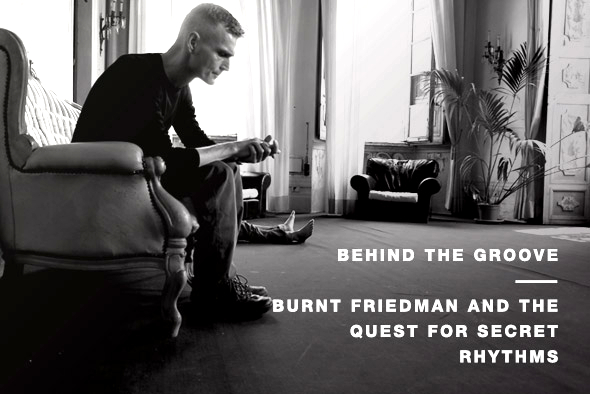Behind the groove: Burnt Friedman and the quest for secret rhythms
The prolific German artist sits down with Oli Warwick to discuss Cease To Matter, the latest LP of a recording career spanning some three decades.
“I like to think of music as a somehow spiraling, spiritual matter,” says Bernd Friedmann, “serving healing purposes, but we have grown into a culture where we think we have to be represented by someone selling something.”
The comment comes in the midst of a wide-ranging, deep-reaching conversation held one Monday evening ahead of the release of his latest album, Cease To Matter. Friedmann’s observation is reflective of his critical engagement with his craft, and in the analytical tone of his answers, he marks himself out as one who is looking for a more meaningful interaction with music.
It shows in his work as well, where richly realised instrumentation flirts with electronic matter in dexterous configurations placed well outside conventional rhythmic patterns, flowing in cycles with no definitive start and end that confound as much as they soothe. Friedmann has committed himself to breaking beyond the bounds of Western rhythmic structures after years spent working with and learning from Jaki Liebezeit, the legendary drummer who made his name working with Can.
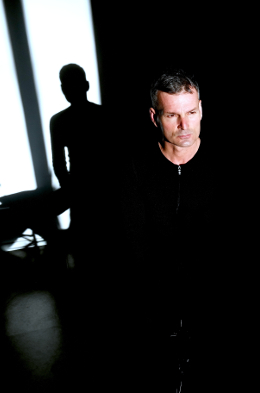 Since the pair met in 2000, they have worked together on five installments of their Secret Rhythms LPs, not to mention countless live performances, hinging their work around Liebezeit’s own visionary binary rhythmic formula, which dismisses the dominance of the 4/4 rhythmic structure and the established tradition of musical notation. This fruitful collaboration has equally given rise to Friedmann’s most incisive work, including solo LPs such as First Night Forever and Bokoboko, not to mention the Nine Horses project featuring David Sylvian, or his Nu Dub Players ensemble.
Since the pair met in 2000, they have worked together on five installments of their Secret Rhythms LPs, not to mention countless live performances, hinging their work around Liebezeit’s own visionary binary rhythmic formula, which dismisses the dominance of the 4/4 rhythmic structure and the established tradition of musical notation. This fruitful collaboration has equally given rise to Friedmann’s most incisive work, including solo LPs such as First Night Forever and Bokoboko, not to mention the Nine Horses project featuring David Sylvian, or his Nu Dub Players ensemble.
However Friedmann was already deep into music production by the turn of the century, having already participated in projects such as Flanger (with the equally prolific Uwe Schmidt) and his own Nonplace Urban Field experiments, while reaching back further you can stumble upon early excursions on Ninja Tune as part of Drome and some early industrial-flavoured techno releases as part of Some More Crime in the late ’80s and early ’90s. This would be achievement enough, but really only marks the point at which Friedmann’s music surfaced out of more localised action around his home town of Kassel in the centre of Germany. From early methodical home recordings with a rubber-band guitar to playing the drums, his school and art college days were accompanied by his own discovery of sound, and with the advent of drum machines in the ’80s he and like-minded friends would delve into the visceral thrill of live improvised performance.
“The music that we performed live in the ’80s very much depended on the moment,” he recalls, “so more or less the musical content wasn’t existing; like having a public rehearsal basically. The great thing about this time was the amount of time that was invested into musical experiments, and it often ended in endless sessions without much structured benefit.”
He recalls one memorable live show in a factory rehearsal space that echoes the post punk and industrial scene that was emerging in the UK at the same time, where Friedmann and his cohorts started unplanned pieces in front of projections of Viennese performance artist Otto Muehl that had been edited into a short film by the Austrian avant-garde filmmaker Kurt Kren.
“Similar projects to compare to,” Friedmann considers, “were maybe Throbbing Gristle, Psychic TV, and Legendary Pink Dots. It used to be our motto to start with zero input, so we would start the rhythm machine with the metronome click only. Once I had tapped onto a rhythm pad or triggered a synthesizer this incoming element would be fixed in a loop and repeat, and the others would play to the first rudimentary grooves and elements. It did go all wrong quite often though.”

At that time, Friedmann was of course exploring possibilities of making music at a time when tradition was being shattered year on year, from the post-punk explosion through waves of ‘wave’ before house and techno had even begun to take shape. Still, in these early stages he considers that he was drawn to ideas outside of rigid rhythmic structures, even if he didn’t understand the principles behind it.
“From the few pieces that I’d heard by that time with odd time signatures, I felt that this could be an exit route into a totally different musical world, and therefore the strangeness attracted me,” he recalls. “You can feel it, but you can’t physically reproduce it. I heard a Frank Zappa live recording for instance sometime in the mid ’80s, which was in nine, and I was trying to get the same kind of feeling with the machines. The logic of the movements remained a mystery, back then.”
While projects such as Nonplace Urban Field and Drome flirted occasionally outside of 4/4 through the ’90s, it was only through joining forces with Jaki Liebezeit that the focus on rhythm took hold over Friedmann’s work. He even describes it himself as the “signifying essence” of what he does now, where once it might have just been a parameter. There were hints towards such approaches even with live performances, where he was experimenting with mixing multiple MiniDiscs running different tracks all recorded at the same tempo, exploring the rhythmic effect of the audible mass depending on when different tracks were triggered without the malleability of vinyl or machine-based sequences. MiniDiscs supposedly made the perfect vessel due to their lack of tempo drift compared to other formats.
From the outside the notion of Liebezeit’s binary rhythmic formula is somewhat hard to grasp. Much like Friedmann did in the ’80s, when you listen to music made using these principles you can feel the meaning even if it would difficult to explain the mathematics of it. I suggest, in vain, that the formula breaks out of the rigidity of Westernised structures.
“The music I produce is even more dependent on rigid loops,” Friedmann asserts. “Once you leave the metronomic 4/4 techno beat it actually becomes a lot more complicated to improvise and so forth, because you have to concentrate and become a lot more on the groove. The metronome is not visible any more and those rhythms have a different signatory.”
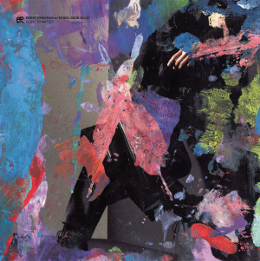 Part of the difficulty in grasping the concept undoubtedly comes from a lifetime raised around linear beats (at least to the average person exposed to mainstream Western culture), and Friedmann points out that other people have completely different kinds of conditioning, using the example of a Turkish wedding party where the congregation will start dancing on a beat of nine. “I’m always tempted to find out how people will react on such kind of rhythms,” he muses.
Part of the difficulty in grasping the concept undoubtedly comes from a lifetime raised around linear beats (at least to the average person exposed to mainstream Western culture), and Friedmann points out that other people have completely different kinds of conditioning, using the example of a Turkish wedding party where the congregation will start dancing on a beat of nine. “I’m always tempted to find out how people will react on such kind of rhythms,” he muses.
He occasionally uses dancing as a reference point, tied into his ideas about the ritualistic purpose music has at times held in societies around the world, and in the early 90s he certainly saw the emergence of house and techno as being a gateway to the West rediscovering such roots after centuries of annotated, formalized composition and performance.
“To me techno music is the western ritual music, the purpose is to induce trance,” Friedmann considers. “Its properties are equivalent to certain indigenous music in non-Western parts of the world, such like trance-inducing Gnawa or Sufi trance music. The development could have been really promising, seeing as Western people, through their education and conditioning, normally focus on the individual whereas with techno the complete absence of human profile and stardom appeared to me as utterly conscious and forward thinking. Nowadays this often seems to have turned upside down. One doesn’t need any skills to produce that sort of music and still could get away with being an artist. It’s a catastrophe, because for punters to join a gathering is for spiritual purposes.”
Despite his feelings on the matter, listeners have often related Friedmann to the fringes of the contemporary house and techno scene. After all, a relationship with labels such as Pole’s ~scape imprint is only half a step away from more 4/4 focused electronic music, albeit in the minimal and experimental corners of the scene, and yet he is the first to consider his music unsuitable for the boom of a PA system or a club environment. Be that as it may, his first appearance at Freerotation in 2013 certainly succeeded in bridging the gap between the hedonistic party environment and a more considered, spiritual experience, as he played a mid-afternoon set in the outside dome, sat on the floor in the lotus position surrounded by a rapt, attentive crowd.
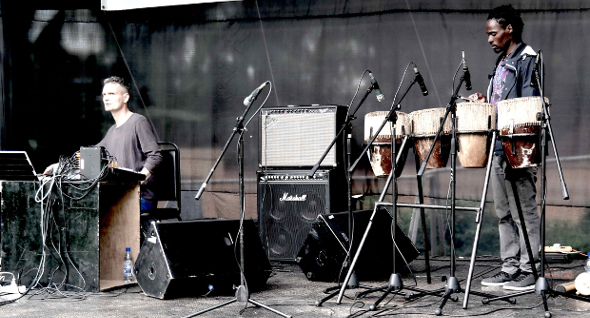
Indeed, his ideas about techno removing the focus on the individual come into conflict with his own position as a performer, and his preference for playing in a more concert-like set up. After all there is a limit to the crossover potential for the two schools of thought according to present social standards; it’s hard to picture a typical concert crowd moving with any rhythmic accuracy to a live performance from Friedmann and Liebezeit.
By way of contrast, in other parts of the world ritual music and their accompanying dances throughout the ages has always much to do with choreography and methodically practiced routine, somewhat at odds with the unconscious pleasure jerk of the typical Western clubber. As his quest into rhythm has ever-deepened, so Friedmann has been drawn ever more towards world music of all descriptions. The name of his record label, Nonplace, serves as a statement against music being bound to a geographical location. After all music, with its universal connective qualities, is never helped by national divisions or short-sighted generic tags related to them.
“I like to refer to preconceptions of music as being a result of a post colonial state where we are still culturally dominated by musical concepts and values of an empire,” he explains. “The entire system of tagging music coming out of non-Western parts reflects an imaginative, territorial grasp on mutative local traditions and social functions that are embarrassing or even racist.” It’s not a problem that is exclusively beyond Europe’s borders for the likes of Afrobeat either; after all krautrock is a term that can come across as offensive to some.
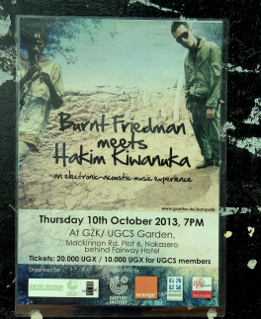 With his own record buying and research naturally gravitating towards traditional sounds from far-flung corners of the world, it was a perfect opportunity when Friedmann was invited by The Goethe Institute to take part in a four-date tour of Africa where he would collaborate at each gig with local musicians (the majority of imagery used here is taken from this trip). It was an experience that fed into some of the themes explored on Cease To Matter, and Friedmann’s overall impression of the post-colonial world.
With his own record buying and research naturally gravitating towards traditional sounds from far-flung corners of the world, it was a perfect opportunity when Friedmann was invited by The Goethe Institute to take part in a four-date tour of Africa where he would collaborate at each gig with local musicians (the majority of imagery used here is taken from this trip). It was an experience that fed into some of the themes explored on Cease To Matter, and Friedmann’s overall impression of the post-colonial world.
“I spent merely three days in four cities,” he explains. “That is not a lot of time to find out about musical stuff going on elsewhere beyond these mostly fully industrialized regions, so my impression is that traditional music is further marginalized. It was in Lagos where there was a group of drummers and singers playing as well, and I got told that they usually don’t have any public place or any occasion where they perform so I’m convinced that the last generation of musicians who play traditional music will pass away, very soon.”
This ominous feeling lingers in Cease To Matter. Although it is not an overtly dark album, there is a melancholy in Friedmann’s melodies. Likewise Daniel Dodd-Ellis’ poetic vocal turns, written by both himself and Friedmann, deal in this somewhat bleak subject matter. The use of lyrics comes somewhat at odds with Friedmann’s desire to remove geographic signifiers from his non-place music, given that language is irrevocably bound to somewhere physical. However, on Cease To Matter a specific approach was employed to break away from structured narrative. Instead fragments of prose come through in snippets, pinging out ideas that only tell half the intended story.
“I’m interested in radio plays, atmospheres and soundscapes combined with lyrics,” Friedmann explains (and his earlier work as Drome and Some More Crime would testify to this), “but of course this is a musical record and not a radio play. I had the idea of audible text as if it was cut out of a movie almost, and there are parts missing. We have only used maybe 30 per cent of what was written down before. It was then chopped up in a cut up manner so that another process of associating took place. I’m hoping that the messages created by such a chance process are beyond the capacities of the author. Some of the lines were randomly thrown into other tracks, so that even the relation to key notes and tempo got lost.”
This approach in some way echoes Friedmann’s mixture of electronic and acoustic production methods, where he picks and chooses the benefits of different disciplines and places them side-by-side in sometimes unlikely juxtapositions. He squirms at the idea of defining his music with such surface terms, for he works in a purposeful fusion of different sources to achieve his creative goals.
“On “Boundary Loss” [from Cease To Matter],” he explains, “the rhythm that I played on the drums was coming from the groove that was played but all the irregularities of live drumming were quantized and edited in the end so that the drum pattern would almost be treated like a step-sequenced pattern.”

“Where I’m sitting now in the studio I can reach everything by hand,” he continues, “and this way the studio becomes one unit, so when I have an idea, I can either program it, or often much easier, I just go and record a close instrument. That’s why I don’t draw a line between playing sessions and producing, it’s one thing for me.”
This mixture of intuition and consideration sums up Burnt Friedman as an artist quite succinctly. While he strives for something more natural in his music than we have been used to for centuries in the Western world, a great deal of thought goes into every action and motivation. He’s highly analytical of his own work and that being undertaken around him, even if he knows not to be too precious in the end.
“Every piece has a different story,” he says of his own tracks. “I never know where it’s going to end. I abolish lots of material during the process, or other materials will be polished like a turd.”
As long as there is someone such as Friedmann out there questing for this balance between the sacred and profane, then there is always hope for musical invention in any culture.
Interview by Oli Warwick
Cease To Matter by Burnt Friedman and Daniel Dodd is out now on Nonplace
